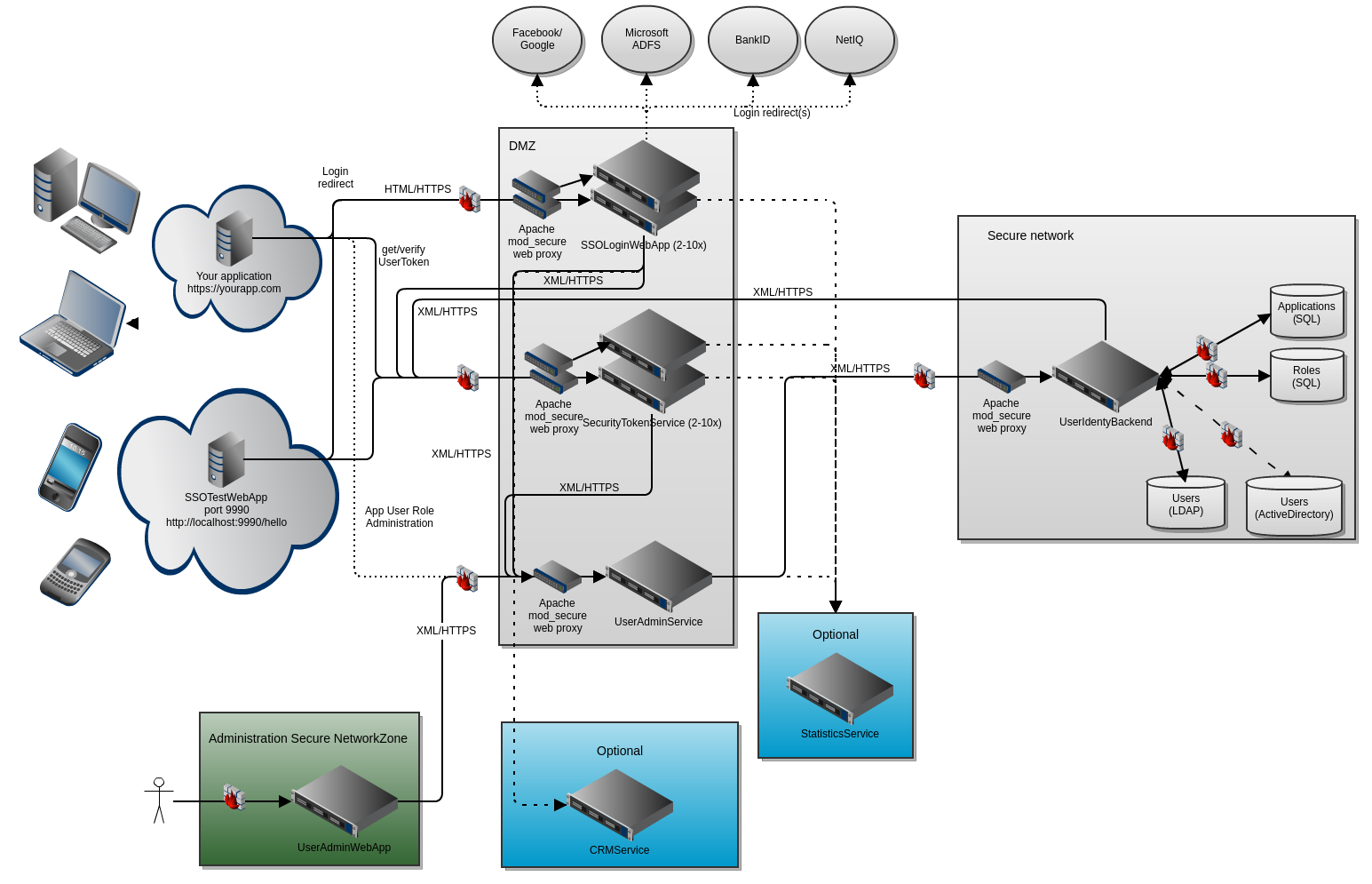The web-frontend for the Whydah SSO services. It uses SecurityTokenService and UserIdentityBackend behind the scenes, where SecurityTokenService needs to be accessible from the same zone that your applications reside.
-
create a user for the service
-
create update-service.sh
#!/bin/sh
A=SSOLoginWebApp
V=SNAPSHOT
if [[ $V == *SNAPSHOT* ]]; then
echo Note: If the artifact version contains "SNAPSHOT" - the artifact latest greates snapshot is downloaded, Irrelevent of version number!!!
path="http://mvnrepo.cantara.no/content/repositories/snapshots/net/whydah/sso/$A"
version=`curl -s "$path/maven-metadata.xml" | grep "<version>" | sed "s/.*<version>\([^<]*\)<\/version>.*/\1/" | tail -n 1`
echo "Version $version"
build=`curl -s "$path/$version/maven-metadata.xml" | grep '<value>' | head -1 | sed "s/.*<value>\([^<]*\)<\/value>.*/\1/"`
JARFILE="$A-$build.jar"
url="$path/$version/$JARFILE"
else #A specific Release version
path="http://mvnrepo.cantara.no/content/repositories/releases/net/whydah/sso/$A"
url=$path/$V/$A-$V.jar
JARFILE=$A-$V.jar
fi
# Download
echo Downloading $url
wget -O $JARFILE -q -N $url
#Create symlink or replace existing sym link
if [ -h $A.jar ]; then
unlink $A.jar
fi
ln -s $JARFILE $A.jar
- create ssologinwebapp.TEST.properties
DEFCON=5
# Normal operations
applicationname=SSOLoginWebApplication
applicationid=15
applicationsecret=33779936R6Jr47D4Hj5R6p9qT
#
#securitytokenservice=http://myserver.net/tokenservice/
securitytokenservice=http://localhost/tokenservice/
#useridentitybackend=http://myserver.net/uib/
useridentitybackend=http://localhost/uib/
#myuri=http://myserver.net/sso/
myuri=http://localhost:9997/sso/
cookiedomain=.whydah.net
logintype.facebook=false
logintype.openid=false
logintype.omni=false
logintype.userpassword=enabled
logintype.netiq=enabled
logintype.netiq.text=NetIQ
logintype.netiq.logo=images/netiqlogo.png
# verification rules for NetIQ redirect control .field=value (which should substring match
logintype.netiq.header.X-Forwarded-For=127.0.0.1
signupEnabled=false
netIQauthURL=https://netiq.novel.com/
logourl=http://stocklogos.com/sites/default/files/styles/logo-medium/public/logos/image/dc5f9f951e37c6ebb2ebecb619fe7555.png
appLinks={'appName':'appUrl','appName2':'appUrl2'}
* create start-service.sh
#!/bin/sh nohup /usr/bin/java -DIAM_MODE=PROD -DIAM_CONFIG=/home/SSOLoginWebApp/ssologinservice.PROD.properties -jar /home/SSOLoginWebApp/SSOLoginWebApp.jar
Typical apache setup
====================
<VirtualHost *:80> ServerName myserver.net ServerAlias myserver ProxyRequests Off <Proxy *> Order deny,allow Allow from all ProxyPreserveHost on ProxyPass /sso http://localhost:9997/sso ProxyPass /uib http://localhost:9995/uib ProxyPass /tokenservice http://localhost:9998/tokenservice ProxyPass /useradmin http://localhost:9996/useradmin ProxyPass /test http://localhost:9990/test/
Developer info
==============
* https://wiki.cantara.no/display/iam/Architecture+Overview
* https://wiki.cantara.no/display/iam/Key+Whydah+Data+Structures
* https://wiki.cantara.no/display/iam/Modules
If you are planning on integrating, you might want to run SecurityTokenService in DEV mode. This shortcuts the authentication.
You can manually control the UserTokens for the different test-users you want, by creating a file named t_<username>.token which
consists of the XML representation of the access roles++ you want the spesific user to expose to the integrated application.
## LICENSE
Licensed under the Apache License, Version 2.0 (the "License");
you may not use this file except in compliance with the License.
You may obtain a copy of the License at
<http://www.apache.org/licenses/LICENSE-2.0>
Unless required by applicable law or agreed to in writing, software
distributed under the License is distributed on an "AS IS" BASIS,
WITHOUT WARRANTIES OR CONDITIONS OF ANY KIND, either express or implied.
See the License for the specific language governing permissions and
limitations under the License.


